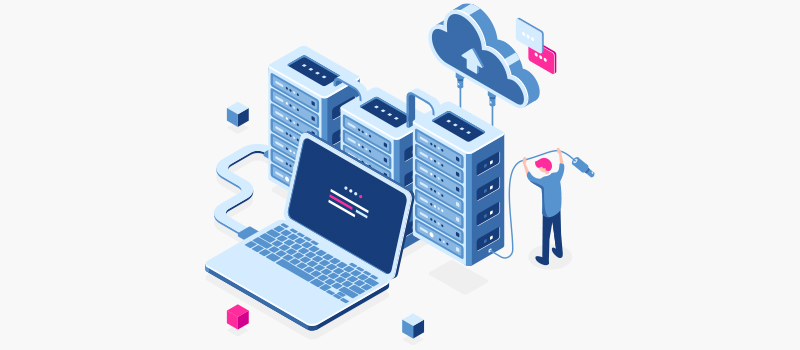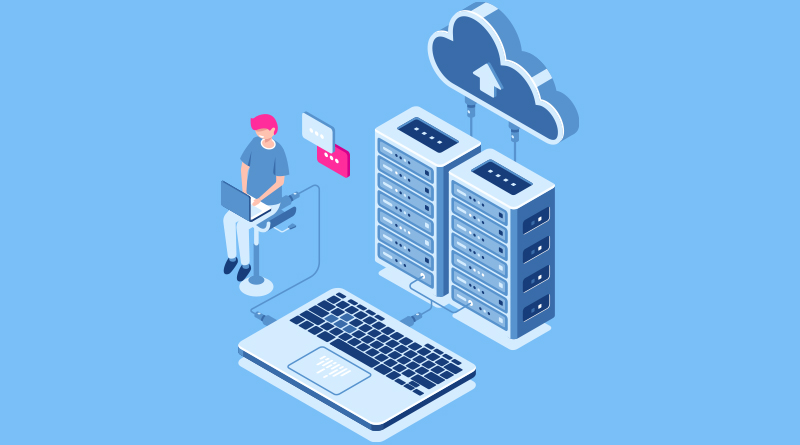Building digital infrastructure is a priority for every business today. Digital infrastructure helps enterprises to manage, store, and process data through a digital medium. A discussion on the cutting-edge digital infrastructure will be incomplete without mentioning the bare metal servers. Through a bare metal server, a business or organization can obtain a stable and secure digital infrastructure. A shared virtual environment has many drawbacks, and the bare metal server can overcome those drawbacks.
An Introduction To The Bare Metal Server

A bare metal server hosting is a physical computer, which has been designed to perform a few specific tasks. Compared to the regular servers, a bare metal server is more secured and stable. The bare metal servers provide a single-tenant environment, which means the server’s physical resources may not be shared between two or more tenants.
Due to the physical separation technology, bare metal servers do not feature the noisy neighbor effect. Another significant benefit of the isolation of the bare metal server is predictability. Due to the performance predictability, a bare metal server offers amazing stability to the users.
Such servers offer direct access to the users, and the bare metal server does not demand special arrangements for the hardware. You do not have to invest in costly hardware components to obtain a stable and seamlessly performing server. Another noticeable feature of the server is the compatibility with the operating system (OS).
A bare metal server gives full access to the underlying infrastructure of the server. Thus, users can easily customize such servers as per their organizational requirements. Such servers are suitable for hosting custom applications or services. A notable benefit is that bare metal server does not need additional layers for hosting applications. Other servers need at least one additional layer of software, known as the type-1 Hypervisor.
As no extra layer of software is present, the bare metal server performs quickly and flawlessly. Users can expect faster performance from this server. Using the bare metal tenants, users can create virtual machines. Users can customize the server according to their requirements and eliminate the occurrence of noisy neighbors.
Related: A Comprehensive Guide To Bare Metal Servers
Deploying A Bare Metal Server

How to deploy a bare metal server? How long does it take to create such a server for an organization? Knowing the answers to these questions is important. A bare metal server setup is a time-consuming process. Apart from the setup, maintenance of the bare metal server is time-consuming as well. You need to schedule regular maintenance for such servers. So, installation and maintenance are costlier for such servers. However, organizations implement such servers to obtain seamless and reliable performance.
After deploying the bare metal server, users must know the steps for sharing the server access with others. Through a virtual private network, a bare metal server needs to be accessed by the users. As a result, data stored on such servers is safe. Without a virtual private network, accessing the server is not possible; thereby, unwanted invaders cannot access data on the server.
In the case of the Linux-based servers, users can use Secure Shell Tunnel instead of the virtual private network. The remote desktop access software will enable more security by implementing encryption.
Users can access the server as the root user. A root user is the admin of the server, who has complete control of the server. You can access the system files and any other server files if you are a root user. A root user can create multiple root users on the bare metal server. However, it enhances security risks and accidental changes to a server. Thus, a root user can create multiple non-root users and give them access to the server.
Bare Metal Server Setup Process

A bare metal server setup involves multiple steps. Thus, every organization should have a proper plan for implementing such a server for storing and managing their organizational data. At first, you need to specify the use of such servers. Will it be a database server? Do you want an application server? Find the answers to these questions before you begin the bare metal server setup process.
In the following section, you can find a few more considerations for the bare metal server setup. Knowing these considerations will help you to create a perfect server with precision.
-
Off-the-Shelf Configuration
Such configuration is required for serving the specific workload on a server. Managed service providers offer pre-configured servers for seamless data processing, crunching, etc. When the organization needs a particular configuration, it needs to develop and configure the bare metal server accordingly.
-
Database, OS, and Control Panels
The concept of bare implies a clean slate, which refers to a server that can be used to its full potential. Users can pick the underlying relational database, operating system, control panel add-ons, root access, and other services.
You can create a virtualized environment by setting up a custom hypervisor. According to their needs, users can modify all the customer’s parameters to serve specific tasks. For such arrays of customization options, the bare metal server setup process becomes time-consuming.
-
Bare Metal Server and Cloud Hosting
Comparing bare metal server and cloud hosting will help you to understand a few important things. Such servers are lesser flexible when you try to expand them. At the same time, a bare metal server is a cost-effective alternative to cloud hosting. The server gives you optimum access to the resources at a lower cost than the cloud server.
A problem with hardware will lead to major service disruptions. But, cloud hosting does not get influenced by the hardware. A problem with the hardware will lead to minimal impact on the cloud server. Depending on the requirements and budget, businesses should choose between the cloud and bare metal servers.
Related: Bare Metal vs. Virtualization: Which Is An Efficient Performer?
Bare Metal Server Management

For managing the bare metal servers, users should learn a few crucial things. Many organizations believe that a large team of IT personnel is required for managing the bare metal servers. However, it is not completely true. In the case of an on-premise solution, a large team of IT professionals will be needed. In other cases, a small team can manage such servers.
Most businesses outsource server management tasks as they want to focus on the business goals. For bare metal server management, you need to keep a few key factors in mind. In the following section, find a guide to those key factors.
-
Patches and Updates
Updating the server patches is essential, and you need to do the same for the bare metal servers. Keeping the server patches updated will help you to enhance security for server data. Nevertheless, updated patches remove the bugs. As a result, you will use the server without facing technical glitches. Updates also optimize the server speed.
-
Monitoring
One of the key bare metal server management tasks is monitoring. You need to track the operational metrics of the server to keep it in a seamlessly performing state. The key things that you need to monitor are switches, servers, firewalls, and many more. IT professionals create threshold alarms to get notified when the threshold crosses.
-
Managing Password
The admin may store various passwords on a server computer to control and grant access to non-root users. Keeping the passwords updated is a good way of ensuring top-notch data security. Changing the passwords regularly is also a server management task.
-
Remote Hands
Management of the bare metal environment includes customizing the server across the border without considerable lead time. For remote server operations, you need to manage the remote hands of the server.
-
Firewall Monitoring
Setup and monitoring the firewalls are crucial server management tasks. IT professionals design bare metal servers to prohibit unwanted traffic on the server. For restricting the unwanted traffic from the server, you need to implement firewall rules with precision. The firewall rules include destination IP address, service port, IP protocol, and many more. The ultimate goal is to understand the ports and their purposes.
-
Operational Management
The operational management includes an array of tasks. Some of the tasks are hardware replacement, domain name services, migration of data, bare metal backup and recovery services, etc.
-
Role-based Access
A server has many users, though the admin has to define the roles of the users. Giving role-based access to the users is important for managing organizational tasks without facing any data threats. For the care metal server, you need to create non-root accesses defining the roles of the users with precision.
Conclusion
A bare metal server gives better security and performance to the users. The server can manage specific workloads with more precision. For example, such servers are suitable for streaming videos, hosting resource-heavy content, etc. Overall, such servers can improve data security and processing for your business to a significant extent.







